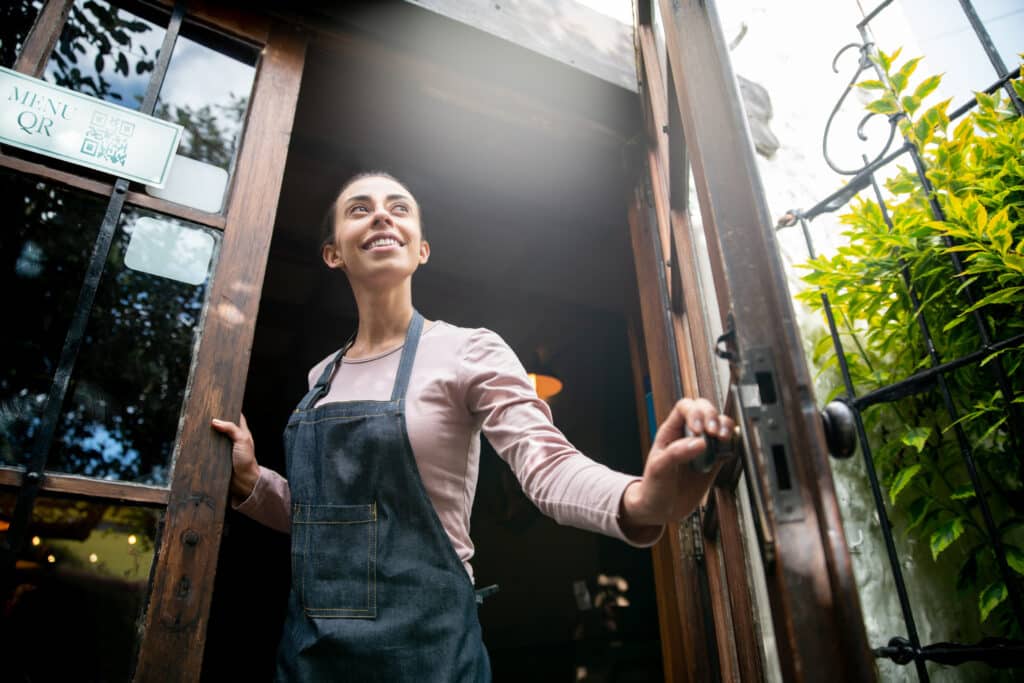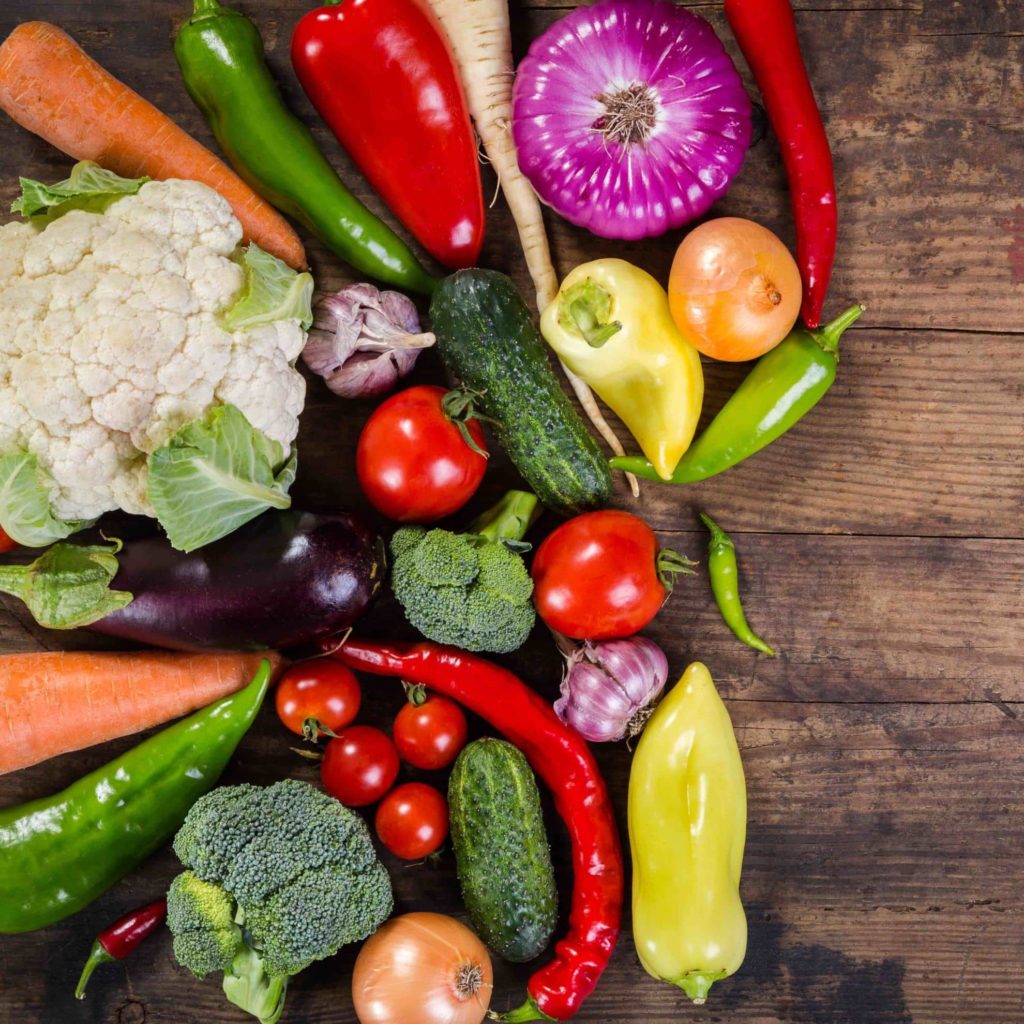Ghost kitchens, commonly known as virtual kitchens, have experienced exponential growth in the last few years.
The ghost kitchen segment was already around at the beginning of 2020, but the market became even more significant in the restaurant industry during the COVID-19 pandemic. As food delivery boomed, and on-and-off capacity restrictions changed indoor dining, the ghost kitchen business model became more widespread.
As the restaurant industry returns to a “new normal,” it appears that ghost kitchens may be here to stay. The New York Times reports that market research firm Euromonitor predicts “ghost kitchens will be a $1 trillion industry in the next 10 years”.
With the potential for this segment, many operators and industry leaders are examining new ghost kitchen opportunities. Could a ghost kitchen present a new revenue stream for your restaurant group? Let’s dive into the details.
Benefits of running a ghost kitchen
The term ghost kitchen generally refers to a food business that only sells items for off-premise dining. A “ghost kitchen” can go by many different names, including a virtual kitchen, virtual brand, or cloud kitchen.
This kind of restaurant serves customers solely through online orders and delivery. There are many ways that the back-of-house may be organized, but the restaurant is set up without a traditional front-of-house (without waitstaff or on-site seating options).
In general, compared to a traditional restaurant model, these virtual kitchens can be easier to set up, run with lower operational expenses, and are better suited to meet some of the challenges brought to the restaurant industry during the pandemic.
With these benefits in mind, many operators (and investors) are considering starting a business in this sector of the market. Curious about some of the benefits?
New Revenue Stream and Increased Profit
A ghost kitchen offers an opportunity for adding more volume and topline sales.
For traditional restaurants, sales are usually limited by restaurant capacity and table turns. With delivery businesses, the limiting factor is kitchen throughput. A separate delivery-only business can be used to supplement in-person dining sales, increasing overall sales volume.
For many restaurant businesses, one of the pressing challenges for profitability is simply increasing topline sales to recoup revenue that was lost over the last period. The pandemic deeply affected profitability in the restaurant industry, and ghost kitchens may be able to help restaurants add some resilience to their balance sheets.
While increasing topline sales is important, it is also necessary to consider expenses as well. Ghost kitchens come with third-party delivery commissions, in addition to increased operating costs in areas like delivery paper and packaging products. While there may be an increase in overall sales, it’s important to also track any increase in expenses at the same time.
Grow Your Business with Lower Opening Costs
In general, ghost kitchens require a smaller startup investment than a traditional brick-and-mortar restaurant. Without the need to build out an expensive front-of-house presence, kitchens can get up and running faster and at a lower cost.
Compared to a traditional restaurant, which needs to consider good real estate for foot traffic, a ghost kitchen just needs suitable kitchen space within your optimal delivery area. This allows a virtual kitchen business to pursue lower-cost retail locations.
If you are using a shared or commissary ghost kitchen, where you can rent space in a commercial kitchen that has already been built out, you can eliminate many startup building expenses. A shared kitchen space comes without the cost of securing every permit and certification or waiting for construction. These “prebuilt” ghost kitchen solutions allow you to rent space and start selling your menu items very quickly, streamlining the process of opening a concept.
For restaurant groups that may run a separate ghost kitchen, a virtual brand can also provide other cost efficiencies. Your ghost kitchen may be able to function as a centralized commissary or production hub, streamlining labor costs or even inventory management.
Leverage Consumer Demand for Takeout and Delivery
By all indicators, the increased consumer demand for takeout and delivery is here to stay. The 2021 State of the Restaurant Industry report by the National Restaurant Association detailed that a year after the pandemic started, “6 in 10 adults say they’re more likely to get their food delivered than they were before the outbreak. For millennials, it’s 71%.”
This trend may continue. A National Restaurant Association survey in August 2021 reported that of 1,000 adults, 37% said they ordered delivery or takeout instead of dining in a restaurant recently.
For many restaurants, a virtual brand can allow them to take advantage of this new appetite for off-premises takeout and delivery. Restaurant customers want the convenience of quick and easy delivery, and ghost kitchens serve as efficient hubs for delivery models.
Test New Brands and Concepts
Finally, ghost kitchens can allow restaurants to test out new concepts and locations with less risk.
First, the overhead startup costs are lower than traditional brick-and-mortar locations, as described above. This allows brands the opportunity to test concepts without taking on as much risk. For an established restaurant group, this may look like experimenting with new menu items or even completely different concepts.
In addition, ghost kitchens can also provide an opportunity for a restaurant business to try out new markets. Restaurants can move to geographic locations that are closer to their target customers, while avoiding high rents for premium retail fronts. If your restaurant group is looking to expand to new geographic locations, ghost kitchens can be an opportunity to build brand awareness and grow your profile.
Choosing the type of ghost kitchen that’s right for your business
There are many types of ghost kitchens, but they all share the same basic principle: the restaurant only prepares food for delivery, and it doesn’t have a customer-facing storefront.
Since this is a fast-growing segment in the industry, it can be difficult to find exact breakdown of the different types of virtual kitchens. But here is a brief overview of a few major categories.
Incubators or Pop-up Kitchens
Incubators or pop-up kitchens are located within a traditional brick-and-mortar restaurant. They act as an extension of the restaurant, but they only fulfill deliveries for online orders.
Some restaurants may use this for their own in-house delivery concept, or to test out a new idea. Spaces can also be rented out to other restaurant concepts that may not have a full-time kitchen space.
The in-house ghost kitchen model provides the potential of an additional revenue stream for an existing restaurant. By renting kitchen space to another brand, or by using kitchen space for a delivery-focused side business, your restaurant business can utilize kitchen space strategically to increase revenue.
Commissary or Shared Kitchens
The other major ghost kitchen model encompasses a shared kitchen space that houses multiple restaurants who share appliances, tools, and other efficiencies. A ghost kitchen company provides the facility space, and ghost kitchen concepts rent space.
This type of virtual kitchen space is available at a lower cost, and restaurants are better able to set up and scale quickly. If your restaurant is looking to target an area where demand for delivery is high, this can allow you to swiftly launch in a new geographic area.
Turnkey Kitchen Concepts
Other brands are offering even easier ways to add a ghost kitchen revenue stream. For example, Wow Bao, a Restaurant365 customer, is offering a type of virtual kitchen package for other restaurants.
Restaurants can buy a starter kit to start serving Wow Bao’s menu, which includes frozen products and a few pieces of restaurant equipment. Wow Bao partners utilize a small space in the kitchen to prepare Wow Bao menu staples, and the menu is promoted through third-party delivery apps. This model and other similar ideas can provide new revenue opportunities for the restaurant with an existing space.
Marketing your ghost kitchen
A successful ghost kitchen is heavily dependent on marketing. There are a few key areas of marketing to start investing in for a ghost kitchen business.
Build Your Brand
You can ensure your ghost kitchen will be listed on delivery platforms, but this doesn’t provide enough visibility to build steady sales and a loyal customer following.
Your ghost kitchen doesn’t have a front-of-house presence to draw in customers, so focusing on your brand appearance is especially important. For everything from your social media to your physical packaging of product, creating a cohesive brand for your ghost kitchen can help build up a positive customer experience.
Create and Cultivate a Digital Presence
Your brand lives online, so it should speak to customers on many different channels.
First, maintaining your online business profiles, whether on Google My Business or Yelp profile, helps customers find accurate information about your business and provides authenticity. Responding to reviews, both positive and negative, can also help provide a connection for customers even when the business doesn’t have a traditional front-of-house.
Other content on social media can be used to promote your brand. User-generated content, like photos of customers with your food or deliveries, is especially popular as a marketing tool.
Drive Traffic to Your Website
Finally, make sure that in addition to listing your restaurant on third-party apps, you create a website. The website should have accurate information and menus, and provide customers with reassurance that your restaurant will provide the full delivery experience. Websites can also host marketing tools like email newsletters or promotions to help cultivate repeat customers.
Making your ghost kitchen profitable
While there are many exciting developments within the new ghost kitchen trends, it’s critical to consistently monitor your virtual kitchen profitability.
There are many elements of the ghost kitchen business model that can contribute to higher profit margins. However, the costs of third-party delivery commissions, packaging, and digital marketing can add up over time. As the market becomes more saturated or consumer behaviors change, virtual kitchen profitability may shift.
From the beginning of business planning, it is essential to ensure your accounting and operational software is tracking all your different expenses and revenue for this specific channel.
Tracking profitability of your ghost kitchen
To track the profitability of your ghost kitchen, examine the capabilities of your restaurant accounting system.
Especially if you are using third-party delivery services for your ghost kitchen, it should be considered a separate location, with a separate accounts receivable (AR) account for each third-party delivery service. With this infrastructure set up, you can track the profitability of each delivery service. Margins may vary between different third-party platforms, depending on your location and contract details.
Your restaurant financial reporting software should enable this kind of accounting tracking. Without this information, it is difficult to fully understand the profitability of your delivery-only business.
In addition, with this AR account functionality, you can reconcile the expected revenue for your third-party delivery channels at the end of each week, which may help benefit your cash flow planning.
Conclusion
Ghost kitchens are offering a new and exciting opportunity within the restaurant industry. As you start to explore the possibility of a ghost kitchen revenue stream for your restaurant group, understanding your accounting and operations data is more important than ever.
If you are considering what a virtual kitchen would look like for your restaurant group, and you would like to easily track data and gain insight into your operations, consider a comprehensive, restaurant-specific management solution. Restaurant365 is an all-in-one restaurant management system incorporating restaurant accounting software, restaurant operations software, inventory management software, payroll + HR software, and scheduling software into a cloud-based platform that’s fully integrated with your POS system, as well as to your food and beverage vendors, and bank.



